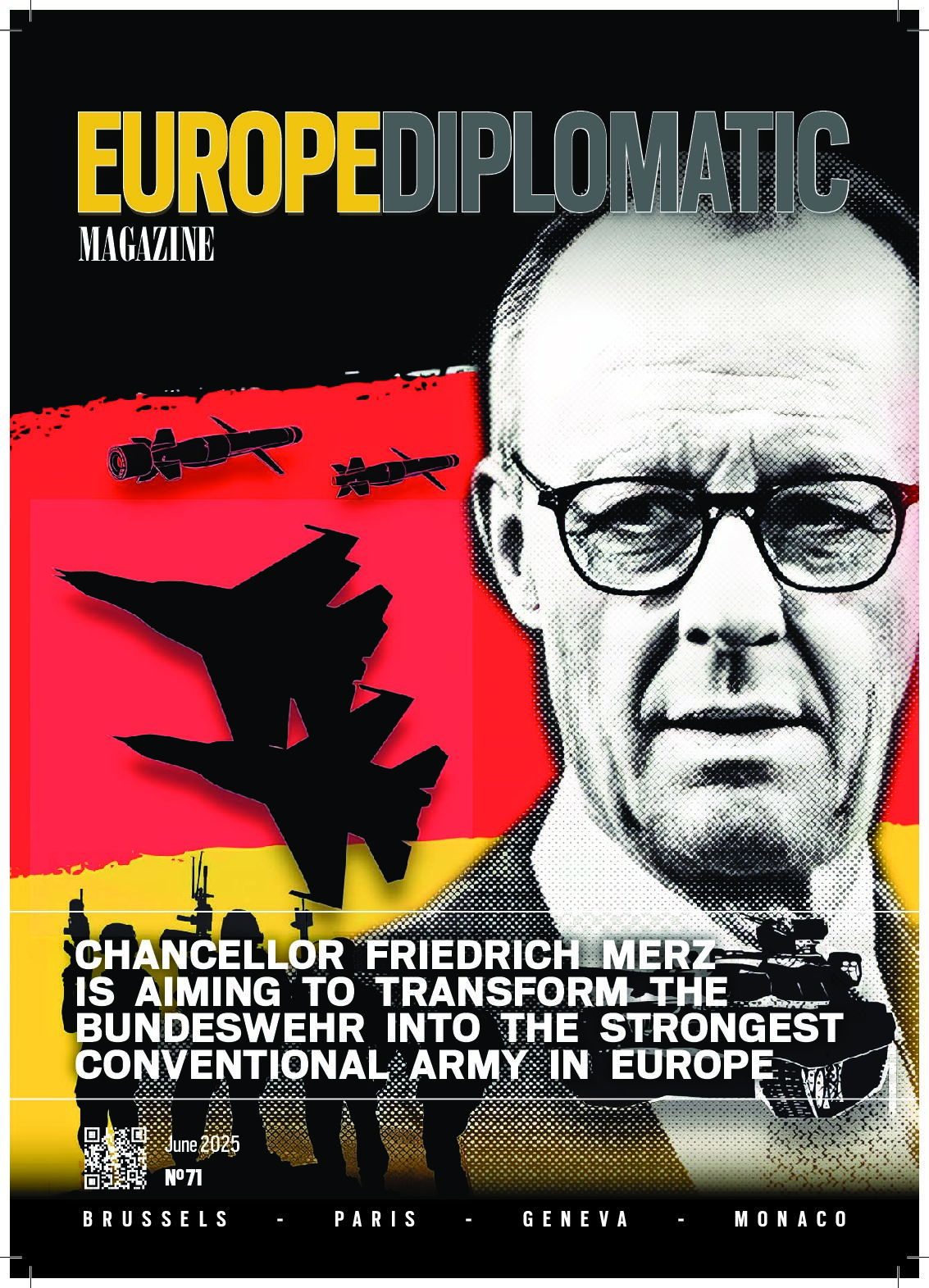A LANDCOM command taking ceremony held August 3, 2018 in Izmir Turkey © usanato
‘NATO is not only the longest lasting alliance in history, but NATO is the most successful alliance in history’ (Jens Stoltenberg, NATO Secretary General).
Indeed, this alliance which today adds up to almost one billion people, has managed to keep its citizens safe and secure ever since the end of World War II.
It has also provided cooperation and dialogue between Europe and its North-Atlantic allies.
‘Seventy years of peace and prosperity is what NATO has produced for Europe and North America’ said the US Ambassador to NATO, Kay Bailey Hutchison.
In 1949, in a European continent in ruins after WWII, the prospect of further communist expansion determined the USA and its European allies to form the North-Atlantic Treaty Organization, also called the North-Atlantic Alliance, or NATO for short.

Signed in Washington DC on April 4th, 1949 by its twelve founding members (Belgium, Canada, Denmark, France, Iceland, Italy, Luxembourg, the Netherlands, Norway, Portugal, the United Kingdom and the United States), this treaty was meant to secure the North-Atlantic area and guarantee the well-being of its members. Besides trying to stop the Soviet Union’s influence in the region, it also aimed to encourage European political cooperation after the war and to discourage any revival of nationalist militarism by having a strong North-Atlantic presence on European soil.

NATO is a political and military alliance that seeks peace and promotes democratic values. Its declared target is to solve all conflicts through negotiations and diplomatic efforts, but it also has the military capacity to respond to any threat targeting any of its members.
In fact, one of its most important guiding principles is clearly stated in Article 5 of the Treaty. Just like the legendary Musketeers, NATO members pledge to help and support each other and that ‘an armed attack against one or more of the Parties shall be considered an attack against them all’. So it’s “All for one and one for all”, as Alexandre Dumas, the famous French writer once said.
Luckily, in its already long history, Article 5 of the treaty has been invoked only once, in 2001, after the September 11 massive terrorist attacks in New York City and Washington DC, when the USA asked for support from its NATO allies in the fight against terrorism.
As a response to the newly formed alliance, the Soviet Union and the Eastern European nations under communist domination formed a rival alliance, called ‘The Warsaw Pact’ in 1955.

Throughout the latter part of its more than 70 year existence, the North-Atlantic alliance has faced difficult times; times of high tension, rapid reactions and decisive and firm stands. In the 1960s, the world came close to World War III more than once (the East-West Berlin Crisis, the Cuban Missile Crisis are just two examples).
Throughout recent history, the Cold War, the fall of the Berlin Wall and the disintegration of the former Soviet Union, as well as the conflict in the Balkans among other events, clearly demonstrated that the alliance’s cooperation between its members was strong and real.
During the conflict in the former Yugoslavia, NATO not only offered full support to the UN but also conducted an air campaign (September 1995) which played a crucial role in ending the conflict.
This, as well as other conflicts in the region, demonstrated that the post-Cold War era can be as delicate and dangerous, and that instability can occur just as easily. Therefore, a strong alliance is definitely needed, even in peaceful times.


With interventions in the Balkans (in Bosnia and Kosovo), NATO practically transformed itself into a more dynamic and ready-to-act alliance. Under the authority of the United Nations, NATO has been leading a peace support operation in Kosovo, since 1999, helping wider international efforts at building peace and stability in that region. In 2003, NATO also took command of the International Security Assistance Force (ISAF) in Afghanistan. That mission, which ended in 2014, was meant to support the Afghan authorities and build the capacity of the Afghan national security forces to provide effective security and fight against terrorists.

The path to cooperation has not always been smooth. In 1966, under the leadership of General Charles de Gaulle and following a dispute regarding nuclear capabilities in Europe, France decided to withdraw from NATO’s integrated military command structure. However, it remained an active member of the alliance and in 2004 began assigning personnel to the permanent staffs of SHAPE (Supreme Headquarters Allied Powers Europe). SHAPE is the headquarters of the North-Atlantic Treaty, currently located in Casteau near Mons, in Belgium). As of 2009, France officially re-joined NATO’s integrated military command structures.
After 1989, following the fall of the Berlin Wall and collapse of communist regimes in most of Eastern and Central Europe, NATO initiated a dialogue and developed partnerships with these countries that were its former adversaries. This dialogue began in 1991, following a join meeting between NATO members and representatives of the former communist countries in the East. A few years later, most of these countries joined the alliance. In 1999, 2004, 2009, 2017 and 2020 there were further expansions of the alliance which currently has 30 member states. For all these former communist countries, the accession to the most powerful military alliance in the world was tantamount to a guarantee that freedom, democracy and progress were secured and closely guarded. ‘NATO is built on security but it is also built on values’ (Condoleezza Rice, former US Secretary of State). The citizens of these countries have embraced this historic event with great optimism and joy. For many, this had a far greater meaning than just a pragmatic one; it was overwhelming on an emotional level, after decades of communist oppression and unimaginable suffering.
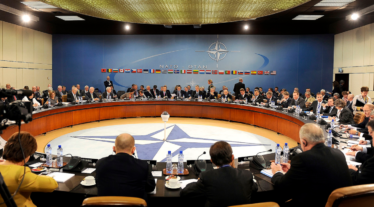
Today as always, any NATO decision is the expression of the collective will of all its 30 members and all decisions must be taken by ‘consensus’. It is also a symbol of the unity of the alliance and of a declared equality between its members.
Besides the 30 member states, NATO also founded the Mediterranean Dialogue with seven Mediterranean countries (Egypt, Israel, Jordan, Mauritania, Morocco, Tunisia and Algeria), seeking to promote security and stability in the region.
Throughout its history, NATO has constantly adapted to the ever-changing and challenging security environment and realities, demonstrating its flexibility and rapid reaction capacities.
In the meantime, Russia has been watching this alliance – its main opponent – gradually advance closer and closer to its borders. It was in 1991 that relations between Russia and NATO were officially established within the framework of the North-Atlantic Cooperation. Over the last 30 years NATO has expanded eastwards into the former Soviet sphere of influence and has enhanced its presence in the eastern part of the alliance, with multinational and combat-ready battle groups in Estonia, Latvia, Lithuania and Poland. NATO also constructed a missile defence system in several member states bordering the Mediterranean Sea.
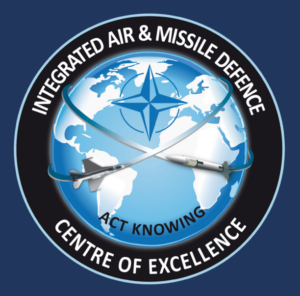
The NATO Integrated Air and Missile Defence (NATO IAMD) aims to safeguard and protect the alliance’s territories and its citizens against potential missile airstrikes. This was requested by NATO’s European allies In 2007 in order to complement the US national missile defence system in order to protect Europe from any attack. Defence interceptors have been placed in Poland and Romania together with a BMD radar hosted by Turkey.
Needless to say, these actions irritated Russia which saw them as clear, intentional acts of harassment, a threat to its borders and political influence, as well as the creation of a strategic imbalance. Russia also strongly opposes any potential, further enlargement of NATO in the future, through the accession of Ukraine and Georgia to the military alliance.

In this complex and sensitive context, Romania, itself a NATO member, inaugurated the headquarters of the Euro-Atlantic Resilience Centre (E-ARC) in Bucharest, at the end of May 2021. While initially set up as a public institution under the authority of the Romanian Ministry of Foreign Affairs, its aim is to make it international in character by bringing together experts from NATO and EU countries.

The main objective of this Resilience Centre is to promote NATO’s interests and objectives. It plans to serve as a ‘platform for strategic discussions and development of concepts, training and exercises, and to collect and provide lessons learned’ (MFA of Romania). E-ARC will also develop programmes and initiatives in the field of resilience, in three main directions: risk mitigation, developing tools and best practices and cooperation on education and training.
NATO is the foundation of its members’ collective defence and, as was stated in the ‘Brussels Summit Statement’ (June 2021), it is ‘the essential forum for security consultations and decisions among Allies’. Its mission is to preserve peace and security for its member nations, through its strategic military command (ACO, Allied Command Operations, in Belgium and ACT, Allied Command Transformation, in Virginia, USA).
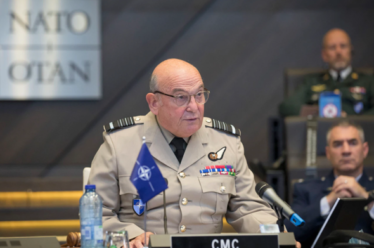
In order to test its military procedures, tactics and capabilities, as well as to find ways of improvement, NATO organises periodic training exercises; for 2021, it planned 95 military exercises.
Today’s realities in the region, including the Ukraine-Russia open conflict, only add to existing tensions and distrust among opponents. At present, the Black Sea is a hot spot, with ongoing NATO naval operations closely monitored by the Russian military on the other side. Only last week Russia claimed that a British allied ship came too close or even crossed into its territorial waters, while sailing too close to the Crimean shore (annexed by Russia in 2014).
Russia warned that “a real conflict with NATO might even start over the current Black Sea naval exercises”, attempting to put pressure on the allies and to emphasize its total disapproval of these military exercises near its borders.

However, it is important to underline that all these exercises are purely defensive and designed to respond to potential security challenges and alerts. They are intended to send a clear message that an attack on a NATO member would be followed by a strong and determined response from the alliance as a whole. All NATO military exercises are also meant to display the alliance’s expertise and level of military readiness and professionalism. Last and by no means least, it is also definitely aimed at discouraging any possible aggression against the military alliance.
Military exercises never target any particular country; they cover all allied territories, including land, air and sea zones. More recently, lately cyber security issues have also been included. ‘Cyber coalition 21’ in November 2021, will be one of the biggest cyber defence exercises in world history, intended to test and train cyber defence mechanisms across the alliance.

Today, cyber-attacks are become an increasingly destructive force. They call for new cyber policies in order to allow for effective responses to any possible attack. Telecommunications and infrastructure are crucial for any country and need to remain strong and resist all malicious interference. It is an accepted fact that 90% of military transport and 70% of communications depend on civilian services. Thus they need to attain a certain level of resilience, whose standards are agreed among all allies under the ‘National Resilience Plans’. Each member state has also agreed to designate a senior official in its government, to keep track and coordinate all the necessary measures in order to ensure security channels and infrastructure resilience remain up to scratch.
Propaganda and disinformation can also be just as dangerous and damaging for the alliance and its members. Particularly in recent years, there has been a sharp intensification of these phenomena which are not to be neglected. Anti-NATO parties in many of the European member states try to gain new followers and to implement an anti-NATO current of opinion. The National Revival of Poland, Hungarian Workers Party, or the Green Party of England and Wales are just a few examples of such parties. Some try to suggest that belonging to such an alliance would put the country in a military position open to conflict; others question the costs for each member or discuss the various NATO military missions in the past.
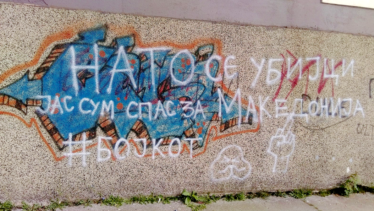
In the meantime, there is a strong movement and pressure within the European Union, especially from France, towards a greater strategic autonomy through its own security policy (Common Security and Defence Policy) and collective efforts (a European Defence Fund). With Brexit, there came a new reality. One of NATO’s greatest supporters left the EU, paving the way for a more autonomous security structure. But here, the EU also lost one of its most powerful players, militarily speaking. NATO and the EU need each other and cooperation and mutual support can only be beneficial. 12,000 US troops are still present in Germany as proof of US implication and presence in Europe. But a stronger and coordinated EU military force could not only guarantee a more effective ‘burden sharing’ between the US and its European allies, but also be beneficial for the US, which could then concentrate more on other areas of interest, such as Asia for example.
All these new challenges and realities continually test NATO’s ability to reshape and constantly adapt.
In order to be able to achieve its targets, the alliance needs to raise enough resources by increasing both national and common funding. In order that their military forces guarantee security and effective reaction in times of crisis, all NATO allies face constant pressure to contribute on a greater scale to the defence budget. Traditionally NATO’s budgets and programmes are funded by direct contributions from all members, to the tune of around 2.5 billion EUR per year. But this is only 0.3% of the total allied defence spending. The US is NATO’s biggest contributor so far, with 3.42% of its GDP. In recent years, there have been voices, especially during the Trump administration, demanding increased contributions from other member states. Germany has pledged to increase its contribution in order to match US funding; this may serve to slightly defuse the crisis surrounding the high costs of maintaining the alliance. As a rule, each country’s contribution is proportional to its GDP (except for the US) and while all contributions are set to increase, the US plans to slightly reduce it’s own in the near future.

While in office, Donald Trump firmly demanded that each allied state should contribute to NATO’s budget with a 2% of its GDP. This target was not reached by many of the 30 members. It is also important that each country follows the NATO official target of military spending, in order to keep their armed forces in shape and ready for action whenever necessary. Of course, these expenditures can be made by some countries with stable and flourishing economies that are able to sustain in the long run, a budgetary effort of such a level.
In addition to budgets, expenditures and other such discussions, the North-Atlantic alliance must have a clear, modern and future-oriented strategy focused on the immediate realities and current threats. For the first time in 2010, NATO adopted the strategic concept of ‘Active Engagement, Modern Defence’, aiming to keep the alliance effective in defending peace, security and prosperity. It also aimed to develop new ways of protection and defence against new attacks and modes of operation of opponents.
The #NATO2030 initiative states the priorities of the alliance for the near future. In June 2020, Jens Stoltenberg presented these priorities for the next decade (2020-2030). He said that members need to make sure “the alliance remains ready today to face tomorrow’s challenges” and that “the alliance stays strong and takes a more global approach, in cooperation and involving political, civil society, public and private sector, all together”.
The ‘NATO 2030’ agenda aims to strengthen the alliance’s ability to adapt and become stronger and more future oriented. The alliance will remain viable and successful as long as it adapts to the changing world and responds quickly to new threats, including security and intelligence.
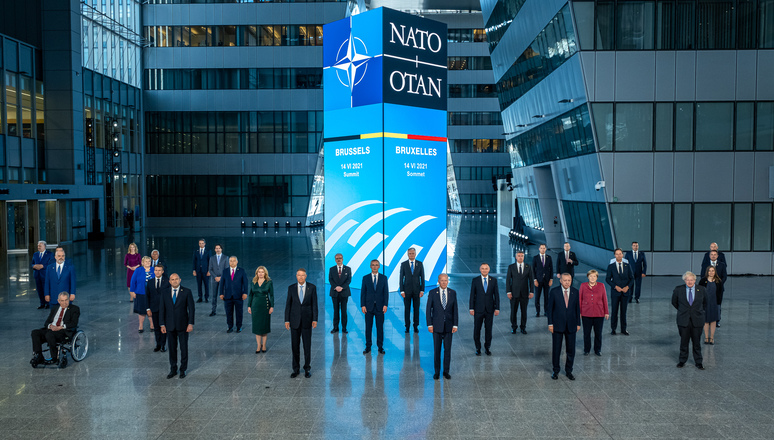
Strengthening resilience to protect NATO’s citizens against terrorism, increased cyber-attacks, all armed attacks, hybrid warfare, natural disasters, climate change and pandemics, together with the effort to reduce all present vulnerabilities are all listed under the ‘NATO 2030’ initiative. Resilience is considered key, as the first line of defence.
NATO Deputy Secretary General, Mircea Geoana, called the recent summit (in June 2021) “a historic moment for the alliance”, highlighting some key decisions taken under the ‘NATO 2030’ agenda. These include the protection of critical infrastructure, promoting innovation and trans-Atlantic cooperation on new technologies. The new agenda is also setting goals on the fight against climate change, considered an important NATO task for the first time in the history of the alliance. At the recent summit, the leaders of all 30 states approved an action plan to limit, anticipate and react to the security implications of climate change.
The alliance plans to invest more in its members’ global defence, to increase resilience of its nations, while also learning from each other and benefiting from each other’s know-how.
NATO recognises today’s new potential dangers, ethnic conflicts, economic crises, and proliferation of weapons of mass destruction, terrorism or political turmoil. All are recognized as potential local destabilisers, and as such these phenomena must be carefully monitored and evaluated if they occur.
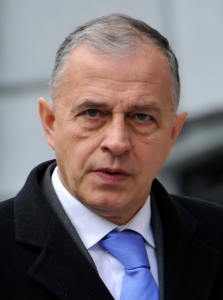
The main idea following the NATO summit in Brussels was that ‘a more global NATO can provide security for the future’. It was agreed that the alliance will strengthen its strategic partnerships, especially with the European Union, but also with the Asia -Pacific region and Australia. NATO also plans to explore new engagements and possible future partnerships in Africa and Latin America.
The rise of China as one of the biggest economic and political powers in the 21st century poses concerns and needs to be considered in any future action plan of the alliance. NATO has to adapt to this new geo-political reality, to understand and recognise the economic opportunities but also the potential threats.
But competition for values, for political influence as well as for economic markets and cooperation can work together. “We all need to find the right balance” said Mircea Geoana.
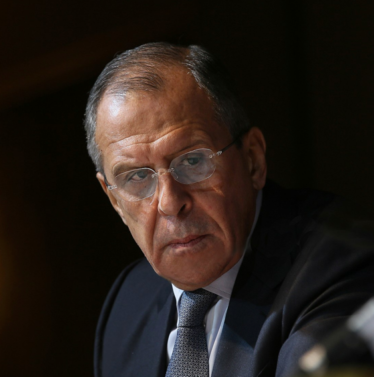
Russia has always been a major player and opponent to NATO. While the Russian Foreign Minister, Sergey Lavrov complained at the latest EU Summit in Brussels, in June 2021 that “NATO is completely refusing all military cooperation with Russia, despite Russia’s offer for dialogue”, France and Germany called for direct talks with Russia, especially after the bilateral Summit in Geneva, Switzerland between US President Joe Biden and his Russian counterpart, Vladimir Putin. German Chancellor Angela Merkel said that “conflicts can be best solved if you also talk to each other” while the French president Emmanuel Macron supported the idea and said that “warmer ties with Russia are necessary for stability of the European continent”. The relations between the European nations and Russia significantly deteriorated after the annexation of Crimea in 2014.
In recent years, the alliance has found that military power is often no longer enough to maintain stability and security. The peace keeping process is often tedious and far more complex. NATO has increased its cooperation with both states and international organisations and it has now an increased international presence, becoming a major player for peace and stability.

At the latest NATO summit, it was also agreed that the alliance will develop its next strategic concept. This will take place at the next summit to be held in Madrid in 2022.
German Chancellor, Angela Merkel also emphasised: “NATO needs to adapt its strategy to meet new challenges”.
Until then, it is imperative that the alliance stays united and proves that it is capable of keeping up with the changing times and the necessities of the future. It needs to be flexible, effective and to also have a good communication strategy. People from all 30 member states currently under the NATO umbrella, need to understand the importance of this alliance for their everyday wellbeing and future. They have to be convinced that the price they pay is never too high and that NATO, watches over their everyday peace and wellness uninterruptedly, in order to ensure their full support in the future. Only together can we be stronger.
‘If you do not seek out allies, then you will be isolated and weak’ (Sun Tzu, ‘The Art of War’)
